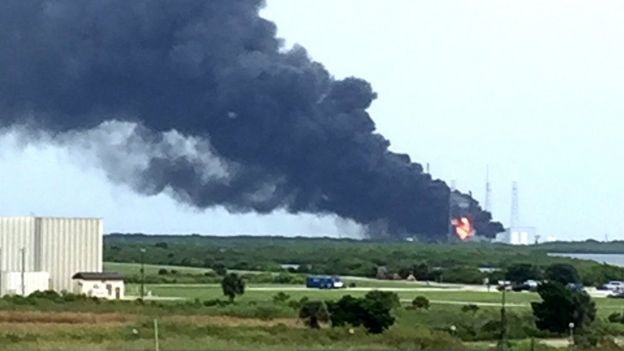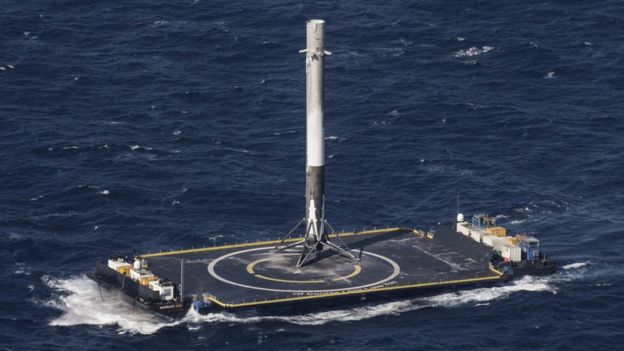A rocket operated by the aerospace company SpaceX has exploded on the launch pad at Cape Canaveral where it was being test-fired ahead of a launch.
The force of the blast shook buildings several miles away.
SpaceX said “an anomaly” had occurred while the rocket was being loaded with fuel. It said no-one was injured.
It said the rocket’s payload, a communications satellite for Facebook due to launch on Saturday, was also destroyed.
Facebook, in partnership with Eutelsat Communications, had been due to use the Israeli-built Amos-6 satellite to deliver broadband internet coverage for swathes of sub-Saharan Africa as part of its Internet.org initiative.
Facebook founder Mark Zuckerberg, who is currently visiting Africa, said he was “deeply disappointed” to hear that the satellite had been destroyed.
“We remain committed to our mission of connecting everyone, and we will keep working until everyone has the opportunities this satellite would have provided,” he wrote on his Facebook account.
Experts said the Amos-6 satellite was valued at more than $200m (£150m).
A rocket operated by the aerospace company SpaceX has exploded on the launch pad at Cape Canaveral where it was being test-fired ahead of a launch.
The force of the blast shook buildings several miles away.
SpaceX said “an anomaly” had occurred while the rocket was being loaded with fuel. It said no-one was injured.
It said the rocket’s payload, a communications satellite for Facebook due to launch on Saturday, was also destroyed.
Facebook, in partnership with Eutelsat Communications, had been due to use the Israeli-built Amos-6 satellite to deliver broadband internet coverage for swathes of sub-Saharan Africa as part of its Internet.org initiative.
Facebook founder Mark Zuckerberg, who is currently visiting Africa, said he was “deeply disappointed” to hear that the satellite had been destroyed.
“We remain committed to our mission of connecting everyone, and we will keep working until everyone has the opportunities this satellite would have provided,” he wrote on his Facebook account.
Experts said the Amos-6 satellite was valued at more than $200m (£150m).


Cape Canaveral Air Force Station said a “significant” explosion happened just after 09:00 (14:00 GMT) at Launch Complex 40, which is leased by SpaceX.
SpaceX said in a statement: “The anomaly originated around the upper stage oxygen tanks and occurred during propellant loading of the vehicle.
A history of SpaceX in pictures
“As per standard operating procedure, all personnel were clear of the pad and no-one was injured. We are continuing to review the data to identify the root cause.”
SpaceX is aiming to create a new era of reusable rockets and affordable private space travel and has used its Falcon-9 rocket to take supplies to the International Space Station (ISS).

In December last year, the California-based company successfully landed a Falcon-9 back on Earth after a mission to launch orbiting satellites – a first in rocketry.
It went on to recover five more boosters, with most of them returning to an ocean platform.
The idea is to re-fly these rockets, and the first such “second hand” vehicle is scheduled to launch in October.
SpaceX is run out of Hawthorne near Los Angeles by Elon Musk, who made his fortune with internet companies.
As well as being the rocket company’s CEO, he also heads up the Tesla electric car company.
BBC









